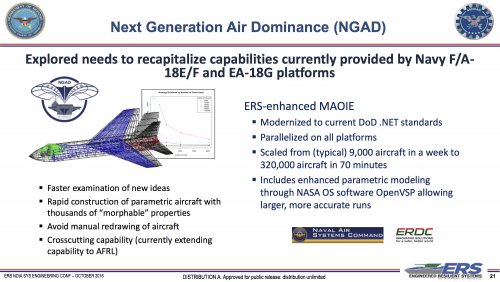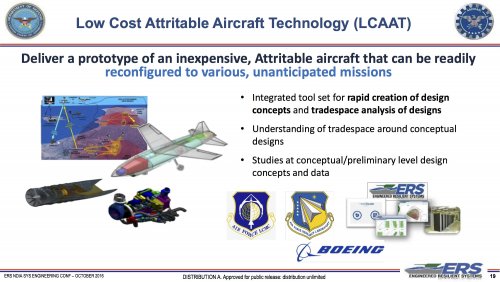In my humble view, after reading all the contributions here sofar, a lot of the linked to publications and some other non-fanboy articles on the vast web, the at present "not-to-be-called-a-fighter-anymore / it-is-not-a-fighter" PCA might just turn out to be a fighterjet after all.
 (assuming there won´t be a F-22 restart that provides lots of new airframes)
(assuming there won´t be a F-22 restart that provides lots of new airframes).
Why I think so?
1.
As has been pointed out by some in preceding posts (Dr. Ransom a.o., if I remember correctly), the fleet of "fighters" that will have to be "enabled" by the PCA - especially the air-air assets - are not that numerous anymore. (F-15s becoming obsolete, F-22s to limited in numbers, F-35 rather a strikefighter then an air-superiority/-dominance platform, Navy Superbugs also not the youngest design anymore, etc).
Although all kinds of new air-warfare concepts float around with drones, AI-swarms, stand-off hypersonic stuff, cyber-SEAD, etc., I´m still convinced there is a need for an aircraft to replace types like the F-15s and F-22s, meaning a need for kinematic performance with an emphasis on speed, (greater) range, survivability, and still adequate manoeuvrabillity.
So besides the few F-22s, what aircraft is the US going to use for air-air warfare? F-35s and UAV-swarms? I don´t think so. Those are good, but alone not good enough.
2. The F-35 is a "fighter". Well, a strikefighter. Well, not the sleekest and fastest one, doesn´t do Cobra´s, but still a fighter. Right?
What are they (Air Force folks) saying and highlighting about it?
Things like "What we really are learning and appreciating about the F-35, is how great an
enabler it is. It´s not a traditional fighter anymore, but it´s unprecedent situational awareness and data-sharing turns it in a kind of mini-AWACS". (not a speficic quote, just summarising what I got stuck in my head from reading several publications). Similar things have been said about the F-22s, though the data-sharing with those is not always "optimal" depending on who the receiver is.
3. USN is also involved in NGAD. They need a future successor for their F/A-18E/Fs. Most probably they´ll want (a variant with) supercruise, great range, enough manoevrability to go aside their F-35Cs. And not tooo big, to fit enough of them on the carriers.
So, imho, they just want more of the awareness & cyber & force-enabling stuff the F-35 brings to the table (to be stretched even further in later increments) and add greater speed and range/persistence to that. Maybe DE-weapons too if the sweat dreams come to promise.
So not a "traditional fighter" like the 4th generation ones, but a kind of "God´s Eye Networked Enabling Cyber Fighter". But still a fighter, just a very smart and fast one. And that´s why they (at least some of them) don´t like the term "fighter" for it. Because it will do a heck more then shooting it´s amraams and do the (very) occasional dogfight. Probably it won´t be bought in high numbers (I´m thinking rather F-22 fleet size, or like the envisioned B-21 numbers), but it will be a high-end penetrator, and one of it´s tasks will be to enable /assist more numerous F-35s, UAVs and maybe some flying missile-stocks to do their job. And as Sferrin says, calling it a "fighter" might again stir up a lot of uninformed folks.


